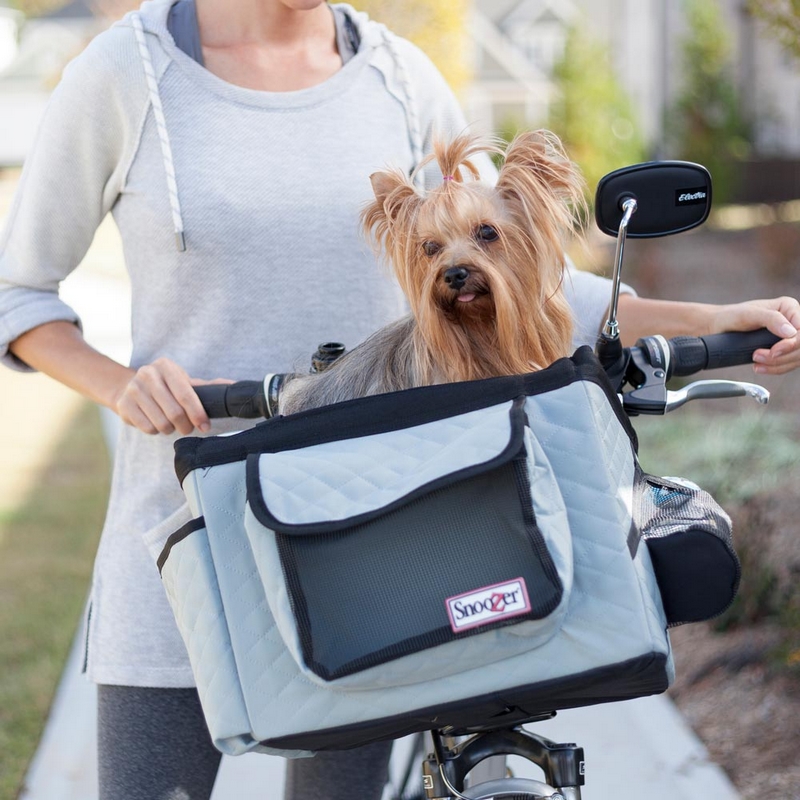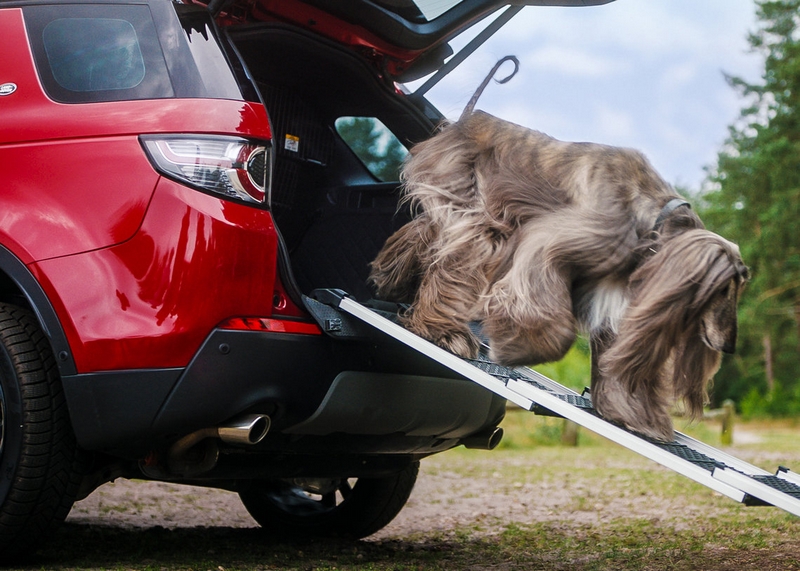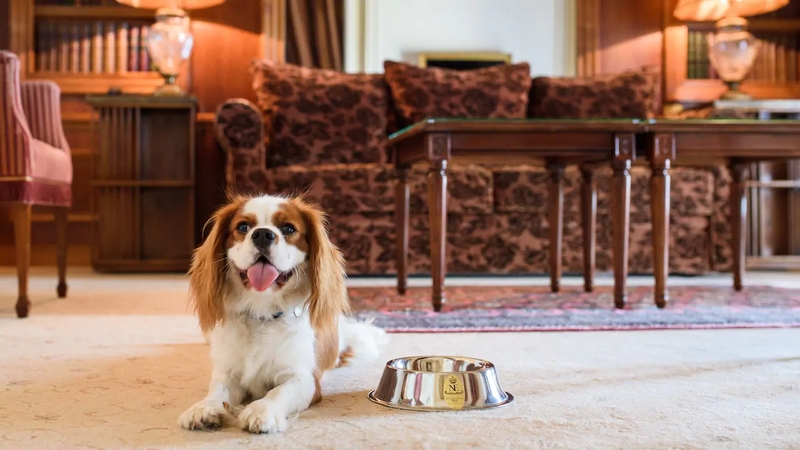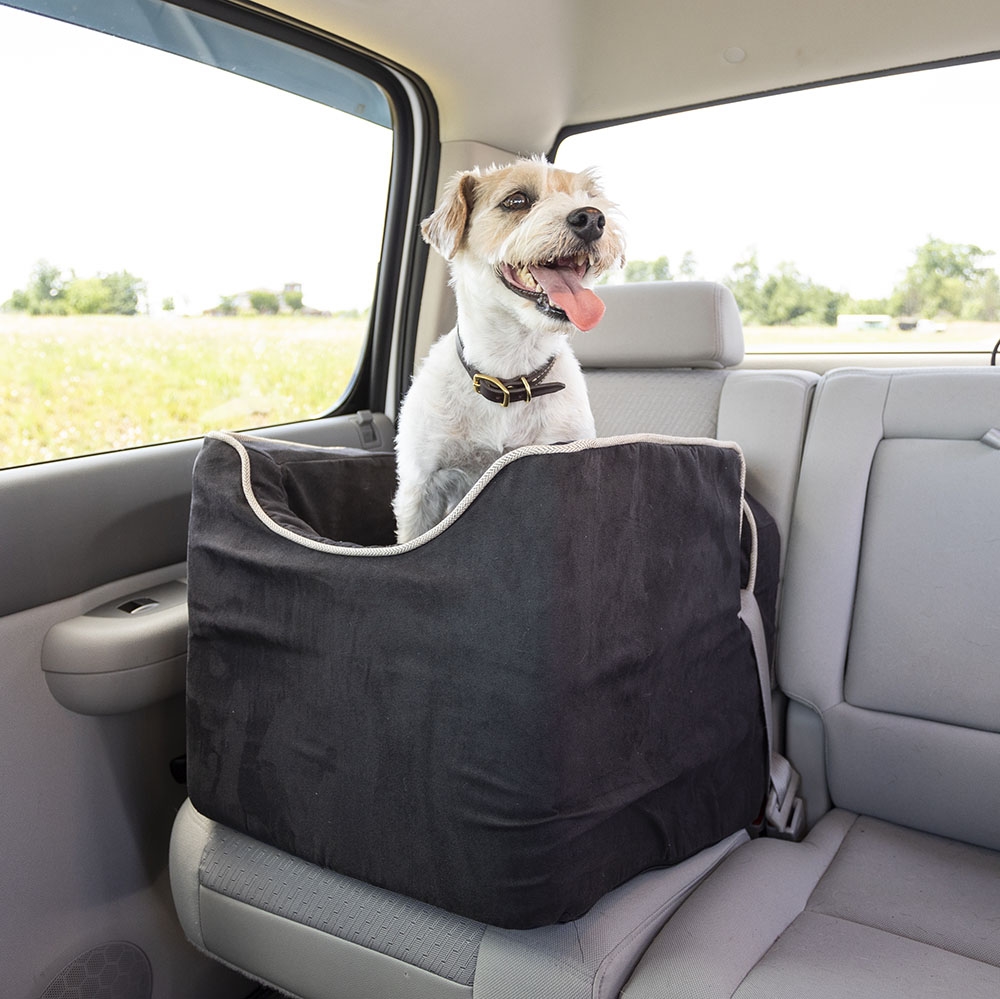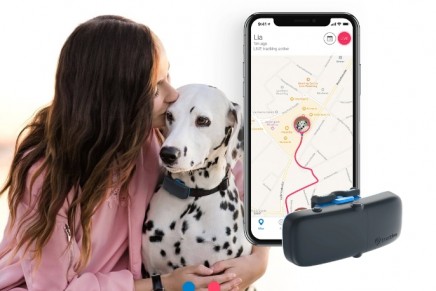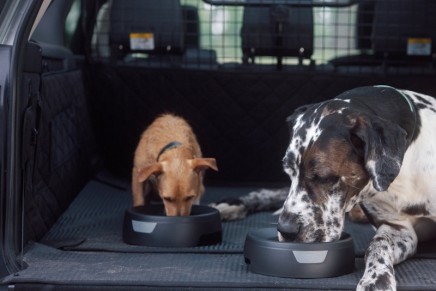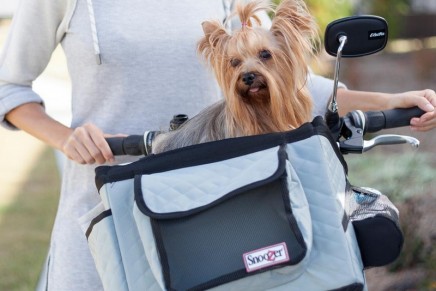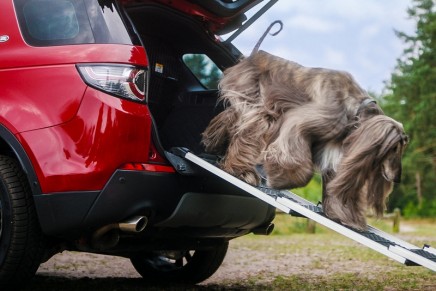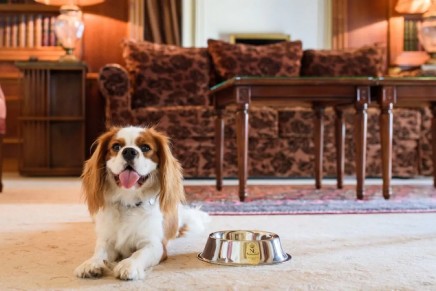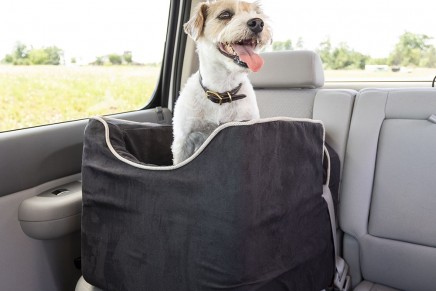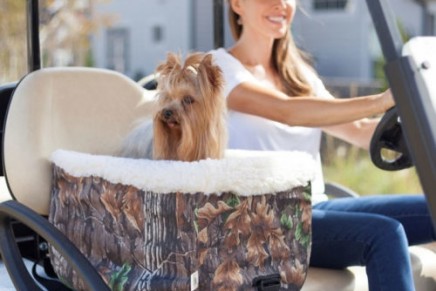Training your dog to up its social skills is important, especially if you don’t like to leave it home alone when you are away. Apart from obtaining such paperwork as a rabies certificate, there are certain social rules you should observe when travelling with dogs. In other words, your dog has to learn to adapt to environments far different from the one it has gotten used to at home.
Remember that every dog, no matter the age, breed or size can learn to be sociable. Nevertheless, it is easier to begin training when the dog is at an early stage in its life. That said, there are several important tips that will help you along the way when prepping your Pooch for Strange(r) Peeps and Other Dogs when travelling with it.
The Basics of Travelling with Small Dogs
Puppies are cute and wonderful. A socially-trained puppy is more than that. It is a lovely and valuable friend – to everyone. In fact, you can have it with you on the cabin when traveling on the plane as an assistance animal. If you are lucky you can easily avoid paying pet fees that are demanded from people carrying their pets with them on the plane cabin or train carriage. The guess is that the main aim behind the will to train your puppy is to make it a respectable companion on your journey to a vacation destination or any other kind of getaway.
One thing that you should remember is the fact that the situation inside a car, train, ship or airplane is not as serene and peaceful as the indoors or the home environment. There is all the hustle and bustle. There are loud noises from people laughing, shouting or arguing in addition to different machines including revving of car, train, bus and airplane engines. Keep in mind that your puppy will be experiencing most of the sounds regularly when travelling with you in the cabin, especially if you have quite a bit of the wandering spirit. More important, you should realize that you cannot cram all the experiences into the puppy’s mind in a single day. You too had to learn gradually. Every day, there is always something new to learn.
Travelling with Larger Dogs
If your dog has passed the puppy stage by far, you can still train it to be sociable and travel with it on by any means of transport. In fact, dog training never stops. Basic training gives way to intermediate dog training before it gets to the highly advanced stages. The key thing to remember that is a whole lot of difference between training puppies and larger dogs. It is the same when it comes to travelling.
A large dog such as a terrier may not be allowed in places where a Japanese Spaniel or King Charles Spaniel is welcome. Probably, your dog may not have been born and bred in such a happy and supportive family as you would have liked. The truth is that a large number of dogs are abused when young simply because they were too little to defend themselves. Some dog owners condemn their pets to a life of isolation in a kennel that has not been fitted with the right ventilation. You may also have acquired the dog because the previous owner did not want it, which speaks a lot about its treatment.
Back to business, training a mature dog, even a terrier, to be social is not rocket science. All you need to understand is that you should first concentrate on getting rid of the negativities the dog may have picked in the course of growing up. Only then can you introduce new behaviors and bring it to accept the company of human beings and other animals when travelling in the cabin or cargo hold. You should set out to discover the situations that are accompanied by stress for the dog. There is always the common fight or flight response. Some situations may bring immediate aggression to the surface or drive the dog to jump into a sudden sprint – another reason you should ensure that your dog’s vaccine administration is up-to-date and that it is always kept on a leash. Otherwise, you may find yourself on the wrong side of the dogs’ health inspection laws. That said, discovery of the stressful situations for your pet should be followed by attempts to desensitize it. Like with training puppies, it should be gradual.
Don’t expect your dog to lick the hands of total strangers within a day, if it had been kept miles away from human contact in its puppyhood or had been abused by humans. Show it that human beings are indeed good. Assuming that it has already accepted you as a close friend, show it your friends by talking to them and displaying positive gestures. Walk it first in familiar environments before going to the unfamiliar. Don’t, however, forget to give it rest stops. If it gets too tired, it will associate the walks with fatigue and stress and wouldn’t be too willing to tag along. Allow your pet treats when it shows a positive disposition when it meets strangers and finds itself in new places and situations. With time it will learn to behave accordingly, knowing that it will be rewarded at the end of it all. More important, it will soon associate meeting people with positive things and situations. It is even more beneficial for you if you are travelling with your dog in the cabin and you have to leave your pet with people who sit next to you in between bathroom breaks.
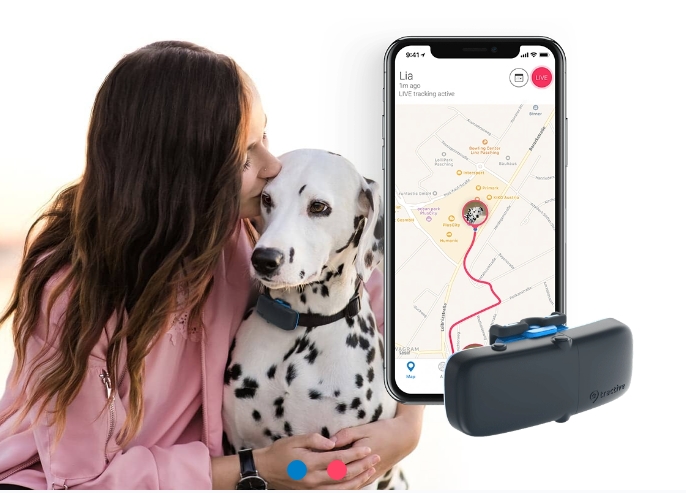
Tractive GPS for Cats and Dogs; @tractive.com
What to Do when Travelling with your Dog
Travelling with a pet is on the flight cabin is not usually allowed in many countries. Still, you can do it as long as you fulfill the requirements for transporting a pet. One of the ways you can get the authorities to allow you travel with your dog is by obtaining the necessary documentation.
You, for example, can contact the concerned embassy or consulate to inform them that you will be taking your dog with you to their country. If you are travelling to the United States, your pet may have to go through an inspection by an American veterinary services provider before it is allowed into the country. It is also advisable to get the assistance of pet passport 1 aphis veterinary services. In addition, you may have to get the permission of border services to get your dog into the country of your destination. Note that few airlines would be generous enough to supply your dog with food. Therefore, be prepared to take food with you on the plane. If you are traveling on a Canadian airline, the Canadian food inspection agency may have to inspect the dog food for safety reasons. That aside, it is also important to carry grooming supplies for your dog with you when traveling. It is important to keep in mind that many airplane journeys are long and you most likely will get a layover or transfer. Prepare yourself and your dog for them. That said, it is important to get into deeper details on what to expect when travelling by various means, especially since there are marked differences between some of them.
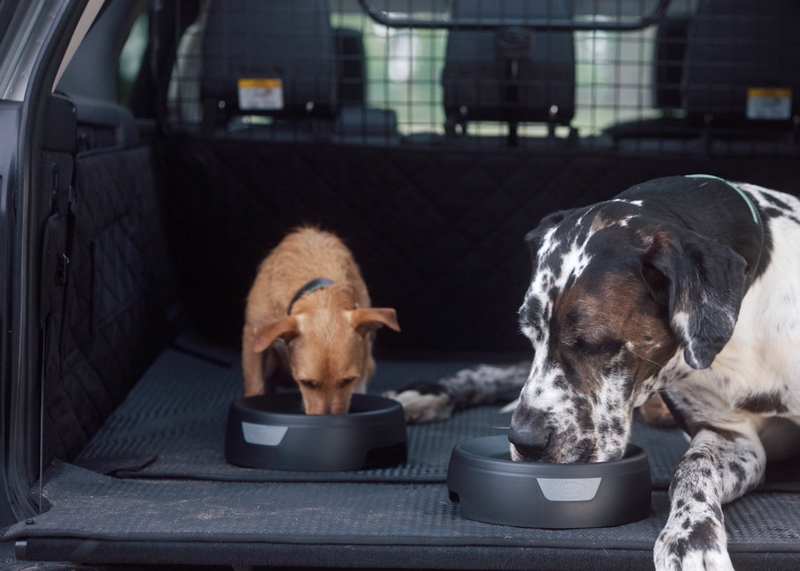
@land rover
Safe Travelling with your Dog by Road
Your pet may you best companion when you are on the road. However, don’t make the mistake of letting it roam free in the car. The best way of travelling with your dog in a vehicle is putting it in a crate that has been secured to the vehicle. Remember that the dog may distract you when you are driving, which in turn may result in an accident. Further, securing it will prevent any harm to it in the unfortunate occurrence of a crash.
Another mistake you should avoid when moving with your dog in a vehicle is allowing it the privilege of occupying the front seat. The reasons are the same. Apart from avoidance of distraction to the driver, you prevent harm to the dog that may result from the deployment of an airbag.
While the aim of training your dog is to make it have a positive reaction to new environments and people who are strange to it, allowing it to stick its head out of the window is dangerous. Keep in mind the fact that most of the harm is usually outside the car. It may come from anything including debris, dust and even passing vehicles. In addition, your dog may develop a sickness as a result of exposure to the cold air outside the car. In the same breath, don’t leave your dog to suffer from the cold at the back of an open vehicle.
Leaving your pet in the vehicle alone when you get out for a gulp or two of fresh air or take in the scenery or do something may sound natural. It is especially so when you think that the dog may not be comfortable walking around among strangers. Nonetheless, it is one of the most dangerous things you can do to your furry friend. Apart from the loneliness, you may expose your dog to hazardous heat levels. The result is death or at best, damage to the organs. If you don’t want to go out with your dog, get a friend or a relative to travel with you. Besides having someone to share in the duty of taking care of the dog, you can be sure that you will have someone to do something about the heat levels that may rise in a very short time. Otherwise, you should always move out of the car with your dog. Don’t forget to put a leash, an ID tag and a collar. Moreover, the dog enough rest stops aimed at allowing it to eliminate or simply stretch its body.
Travelling with your Dog by Rail
Thankfully, dogs are allowed by many countries on train. You are luckier if your pet is a service animal, since its kind is usually allowed on all trains. Remember, however, that taking care of the dog is your sole responsibility. It includes exercising and feeding it during stops. In addition, make sure that it does not become a nuisance or a source of harm to fellow passengers. You, therefore, should consider taking it through the outlined social training steps.
Travelling with your Dog by Ship
If you are travelling by ship, you most probably will be away from for a long time. You, therefore, may have to travel with your dog, especially when there is no else to take care of it while you are away. Unfortunately, many cruise lines don’t allow dogs or any pet in their ships. You are in luck if your pet is an assistance dog. Still, you can travel with your dog on a ship even if it is not a service animal. You, nevertheless, have to accept the fact that your dog may have to be confined in a kennel or a cabin. It is wise to keep checking on your pet as well as ensure that the kennel in which it is kept is clean and has proper ventilation as well as warmth.
Travelling with your Dog by Air
Transporting a dog by plane is not always easy or safe. One of the most important steps you should take is giving your pet enough time for preparation before the actual day of the flight. If it has never traveled on an airplane before, the longer the time for preparation should be. Remember dogs such as pugs and bulldogs are more exposed to the health risks associated with flying courtesy of the tendency of their faces to be pushed in. Therefore, special care aimed at preventing vulnerability to heatstroke and deprivation of oxygen should be reserved for such breeds.
If you are sure that there is no other option to transport your dog by air, make the necessary arrangements to allow it room in the cabin. Keep in mind the fact that you will have to part with
an extra fee for having your dog in the cabin. Nevertheless, it is important to inform your airline about your airline, since most airlines will not allow every passenger to be accompanied by their
pet. In other words, there is a limit to the number of pets that can be in the cabin during a flight. The regulations also give more chances for small dogs than they do larger dogs. It is, therefore, important to determine whether the size of your dog meets the allowed threshold, if you don’t want your pet to be turned away at the last minute.
Getting your dog vaccinated is not enough. It will still have to pass through security checks just like you. The experience may not be pleasant and you will have to ensure that the dog is secured during the x-raying stage of the security screening. Otherwise, you need to ask whether there is an alternative to having to remove your dog from its carrier.
Once inside the plane, the dog may not be allowed in the cabin and it may have to be confined in the cargo hold. It is one of the most difficult parts of the journey, at least for the dog. In fact,
some dogs have suffered injuries or died while travelling in the cargo hold. Some of them have been lost. Still, it is your duty to ensure that they are safe. Put in another way, don’t transport your pet in an airplane cargo hold, if you are not sure that it is properly ventilated or it has the temperatures levels are comfortable. Further, check on your pet regularly to ensure that it is safe.
Conclusion
Socializing a dog of any age or breed is not always easy. It calls for determination and above all, patience. The results will be a pet to be proud of. You will have nothing to worry about your dog’s behavior or reaction to other dogs when it travels in the cabin. In addition, you can transport your dog to any destination or use any mode of transport including airplane or train. Remember that the early periods of a dog’s development are the most crucial. If you don’t know much about a puppy’s upbringing, get a good breeder. This does not mean that you can’t do it on your own. The most important point to keep in mind is that dogs, like humans, have their own reactions to other beings and surroundings. Make their experience as pleasant as possible.
Training a shelter dog may prove more difficult than training a puppy. Still, it can and has been done. You only need to understand the fact that older dogs may have picked positive or negative responses triggered by previous experiences. Set out to discover the situations that result in the dog feeling threatened, and try to counter them by exposing it to them but at a lower level at first.
If, for example, the dog is not used to meeting another dog or cat, let it meet them but at a distance. Gradually shorten the distance until it can comfortably brush ears with them. It should be the same with people and surroundings including machines and other things that produce a lot of noise.
You should also note that the journey begins long before your departure time at the airport. It pays, therefore, to be prepared. You may be tempted to consult your local veterinarian with the aim of administering sedatives to your dog. Don’t. Apart from the fact that many airlines do not allow sedated pets into their flights, the drugs pose health risks to your dog. It may never even recover from the sedation. Remember that transporting pets for long distances comes with a number of difficulties. The greatest among them is the fact that you have to get the right paperwork. Often it means that you have to fulfill many requirements. That said, there are a few important points to keep in mind.
First, avoid airline transfers when travelling with your dog. They only add to the discomfort and chances of danger to your pet. In addition, let the captain know that you have your pet onboard. There may just be special measures put in place to ensure the safety and comfort of the dog. If your dog is the kind that has a pushed-in face, don’t transport in the cargo hold. Its place is in the cabin where it can receive special attention. Also ensure that your dog is fitted with a collar and the right identification, clearly displaying the owners name and address including telephone number. Finally, avoid transporting your dog by air during such high seasons as the summer or holidays, in order to decrease chances of rough handling.

